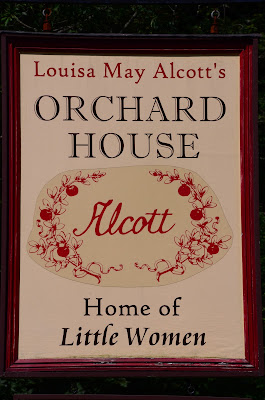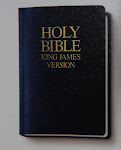Friday, Saturday and Sunday we spent in the heart of American History, Concord, Boston, and Lexington, MA. What a great time we had! First we stopped at Orchard House in Concord.

This is a home that Louisa May Alcott lived in with her family when she wrote Little Women. Louisa's books have been favorites of mine since I was a girl. The home was built in the late 1600's. The Alcotts moved in after doing repairs in the mid 1800's. It is the original home and 85 % of the furnishing belonged to the Alcotts. I especially enjoyed seeing the little desk in Louisa's room that her father built for her and the original sketches of her younger sister, May, right on the walls and trim in her bedroom.
Next we went to the site of the location of the "shot heard 'round the world", the North Bridge. It is not the original bridge, but it was amazing to be at a location of such important US History. We listened to a National Park volunteer explain the events that happened here, but in a nutshell, this is the location where the Revolutionary War officially began when American colonists fired on British troops for the first time.
Riding around Boston the next day on a hop on and off trolley was the way to see and learn about the history of this impressive city. We stopped on the Boston Harbor for some delicious seafood. Steven had a King fish Salad and I had clam chowder. Yum, Yum!
Our next stop was Faneuil Hall, which has served as a marketplace and a meeting hall since 1742. Inspirational speeches by Samuel Adams and other patriots were given at Faneuil Hall. These oratories became the footstool for America's desire to obtain independence from the British.
The hall was impressive on the outside and beautiful on the inside.
It is interesting to note that we experienced the coldest our car thermometer has ever been coming on our mission, and now the hottest our car thermometer has even been going home from our mission.
It was very hot in Boston, but still, we walked about a mile of Boston's Freedom Trail; we started at Fanueil Hall . . .
walked past Paul Revere's home . . .
and ended at the Old North Church. This church was built in 1723 and is the oldest active church in the United States.On April 18, 1775, probably a little after 10 P.M., the 191 ft steeple of the Church served a military purpose. Paul Revere told three Boston patriots to hang two lanterns in the steeple. The lanterns were displayed to send a warning to Charlestown patriots across the Charles River about the movements of the British Army. This lantern method was a fast way to inform the back-up riders in Charlestown about the movements of the British; these back-up riders planned to deliver the warning message to Lexington and Concord in case Revere and Dawes were arrested on the way.
The lanterns were hung for just under a minute to avoid catching the eyes of the British troops occupying Boston, but this was long enough for the message to be received in Charlestown. The militia waiting across the river had been told to look for the signal lanterns, and were prepared to act as soon as they saw them.
Old Ironsides was our next stop. Not only is the ship itself impressive, but so is her battle record. USS Constitution (Old Ironsides) is a wooden-hulled, three-masted heavy frigate of the United States Navy. She is the world's oldest floating commissioned naval vessel and was launched in 1797.
The Constitution is most famous for her actions during the War of 1812 against Great Britain, when she captured numerous merchant ships and defeated five British warships. These battles earned her the nickname of "Old Ironsides" because cannon balls just bounced off of her sides like they were iron, even though they were really constructed of wood.
Our last stop in Boston was the Public Gardens. I love reading about Boston and especially this park in Robert McCloskey's Caldecott Medal winning picture book, Make Way for Ducklings.
So it was a special treat to ride in the Swan Boats that were featured in this true story of a family of ducklings and to see these bronze statues honoring Robert McCloskey.On Sunday we enjoyed going to church in Boston and then we drove to the Boston Temple. There is such peace and serenity on the temple grounds.
We again learned more of the history of our country as we visited Lexington and the Lexington Battle Green, properly known as Lexington Common, which is the site of the Battle of Lexington.
In 1775 local Minutemen emerged from Buckman Tavern adjacent to the Lexington Common and formed two rows on the Lexington Common to oppose British forces. The Minutemen were seriously outnumbered and suffered the first casualties of the American Revolution when the British troops opened fire. The militiamen didn't return fire during this battle.
This flag flies at the battlefield to honor those who fought and died there. It is one of a few that is allowed to fly day and night every day of the year. It is replaced every year on Flag Day. Below is Buckman Tavern where the colonists met before the battle and took the wounded after the battle.
So historically, this is the sequence of events. Lanterns were hung in the Old North Church as British troops began marching towards Concord to confiscate ammunition. Paul Revere and others ride through the night sounding the warning, "The British are coming!". British troops arrive early in the morning at Lexington and are met by the Minutemen. The British troops fired on the Minutemen killing some and wounding others. Colonists didn't fire back. British troops then moved on to Concord and a battle ensues on the North Bridge where Minutemen fired on British troops for the first time. As Minutemen arrive from the surrounding areas they soon out number the British troops and win the battle. The Revolutionary War begins.
Learning firsthand about American History at these sites has been an enriching experience for us both.
















































.jpg)

